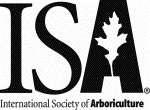
| Current Articles |
| Browse Archives |
| Search |
| Contact Us |
| AUF Home |
 |
Arboriculture & Urban Forestry Online
| Volume 33, Issue 2 —
March 2007
https://www.isa-arbor.com/Publications/Arboriculture-Urban-Forestry |
|
Long-Term Trends in Small Mammals on a Right-of-Way in Pennsylvania, U.S. (View PDF) Richard H. Yahner, Richard T. Yahner, and Russell J. Hutnik Abstract: The State Game Lands 33 Research and Demonstration Area, Centre County, Pennsylvania, U.S., has been studied since 1953 with the objective of comparing the effectiveness of commonly used mechanical and herbicidal maintenance treatments on vegetation and wildlife on a right-of-way (ROW). Small mammals are important wildlife species on a ROW by consuming tree seeds, thereby reducing invasion of undesirable tree species, and these mammals are important components of a healthy ecosystem. As a follow up to a 2-year study of small mammals conducted 15 years earlier (1989 to 1990) on the State Game Lands 33 ROW, we initiated a 2-year live-trapping study in 2004 on small mammal populations on this ROW. The objectives of our study were to determine relative abundance and species richness (number of species) in six major cover types and in the adjacent forest. One hundred twenty-one individuals of eight species were observed in 2004 and 2005 combined; the most common species was the white-footed mouse (Peromyscus leucopus). One of the most important cover types to small mammals on the ROW was forb-grass, whereas the forest cover type tended to be less diverse in terms of number of mammal species than in cover types on the ROW. Keywords: Herbicides; Pennsylvania; populations; right-of-way; small mammals; vegetation. |
Current Articles
| Browse Archives | Search | AUF Home | ISA Home
| Get Acrobat